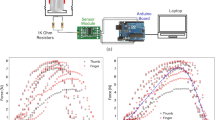Abstract
Purpose
Nasal irrigation is the process of passing the saline solution through the nasal passages which is frequently used in the management of the inflammatory nasal and paranasal disease. This paper aims to investigate wide range of head positions on nasal saline irrigation using Computation fluid dynamics model to show the wall shear stress and pressure of the irrigant.
Methods
The geometry of the nasal cavity and maxillary sinuses obtained from a Magnetic resonance imaging (MRI) scans of a healthy male without any nasal abnormality. Pressure and the mucosal wall shear stress have been mapped during nasal saline irrigation from a Neti Pot using CFD simulations at four different head positions.
Results
The wall shear stress was highest in regions including the turbinates and nasal valve for most of the head positions and inlet side directions. All head positions and side irrigations, the mucosal wall shear stress at the left congested side is higher than at the right patent side. Also, the saline pressure at the side of irrigation is higher than at the contralateral side of irrigation.
Conclusion
The results from this study show that changing the user condition will affect the efficacy of the nasal saline irrigation treatment.






Similar content being viewed by others
Abbreviations
- CFD:
-
Computational fluid dynamics
- CRS:
-
Chronic rhinosinusitis
- FESS:
-
Functional endoscopic sinus surgery
- ASL:
-
Airway surface liquid
- PCL:
-
Periciliary liquid layer
- ATP:
-
Extracellular nucleotides such as adenosine triphosphate
- VOF:
-
Volume of fluid
- MTV:
-
Mucociliary transport velocity
References
Suh, J. D., & Kennedy, D. W. (2011). Treatment options for chronic rhinosinusitis. Proceedings of the American Thoracic Society, 8(1), 132–140.
Salati, H., Bartley, J., & White, D. E. (2020). Nasal saline irrigation–A review of current anatomical, clinical and computational modelling approaches. Respiratory Physiology & Neurobiology, 273, 103320.
Jang, D. W., et al. (2013). Budesonide nasal irrigations in the postoperative management of chronic rhinosinusitis. International Forum of Allergy and Rhinology, 3(9), 708–711.
Rudmik, L., et al. (2011). Early postoperative care following endoscopic sinus surgery: An evidence-based review with recommendations. International Forum of Allergy and Rhinology, 1(6), 417–430.
Reeves, E. P., et al. (2012). Hypertonic saline in treatment of pulmonary disease in cystic fibrosis. The Scientific World Journal, 2012, 1.
Beule, A. G. (2010). Physiology and pathophysiology of respiratory mucosa of the nose and the paranasal sinuses. GMS Current Topics in Otorhinolaryngology, Head and Neck Surgery, 9, Doc07.
Garland, A. L., et al. (2013). Molecular basis for pH-dependent mucosal dehydration in cystic fibrosis airways. Proceedings of the National Academy of Sciences of the United States of America, 110(40), 15973–15978.
Åstrand, A. B., et al. (2015). Linking increased airway hydration, ciliary beating, and mucociliary clearance through ENaC inhibition. American Journal of Physiology. Lung Cellular and Molecular Physiology, 308(1), L22-32.
Button, B., R.C. Boucher, and U.o.N.C.V.L. Group. (2008). Role of mechanical stress in regulating airway surface hydration and mucus clearance rates. Respiratory Physiology & Neurobiology, 163(1), 189–201.
Button, B., Picher, M., & Boucher, R. C. (2007). Differential effects of cyclic and constant stress on ATP release and mucociliary transport by human airway epithelia. Journal of Physiology, 580(2), 577–592.
Zhao, K., et al. (2016). Sinus irrigations before and after surgery—Visualization through computational fluid dynamics simulations. Laryngoscope, 126(3), E90–E96.
Craig, J. R., Palmer, J. N., & Zhao, K. (2017). Computational fluid dynamic modeling of nose-to-ceiling head positioning for sphenoid sinus irrigation. International Forum of Allergy & Rhinology, 7(5), 474–479.
Inthavong, K., et al. (2020). Characterization of nasal irrigation flow from a squeeze bottle using computational fluid dynamics. International Forum of Allergy & Rhinology, 10, 29.
Proctor, D. F., & Andersen, I. H. P. (1982). The nose, upper airway physiology and the atmospheric environment. New York: Elsevier Biomedical Press.
Dykewicz, M. S., & Hamilos, D. L. (2010). Rhinitis and sinusitis. Journal of Allergy and Clinical Immunology, 125(2 Suppl 2), S103–S115.
Wexler, D. B., & Davidson, T. M. (2004). The nasal valve: A review of the anatomy, imaging, and physiology. American Journal of Rhinology, 18(3), 143–150.
Tu, J., Inthavong, K., & Ahmad, G. (2013). Computational fluid and particle dynamics in the human respiratory system. Dordrecht: Springer.
Salati, H. (2019). Investigation into nasal saline irrigation within a healthy human nose (Doctoral dissertation, Auckland University of Technology).
Kiran, R., Elgaddafi, R., Ahmed, R., Salehi, S., Griffith, C. A., & Fajemidupe, T. (2020). Wellbore fluid sonic conditions during blowouts. Journal of Petroleum Science and Engineering, 195, 107822.
Salati, H., et al. (2021). Neti pot irrigation volume filling simulation using anatomically accurate in-vivo nasal airway geometry. Respiratory Physiology & Neurobiology, 284, 103580.
Inthavong, K., et al. (2020). Characterization of nasal irrigation flow from a squeeze bottle using computational fluid dynamics. International Forum of Allergy & Rhinology, 10(1), 29–40.
Acknowledgements
This research would not have been possible without the exceptional support of A/Prof Roy Nates from Auckland university of technology.
Funding
Not applicable.
Author information
Authors and Affiliations
Corresponding author
Ethics declarations
Conflict of interest
The authors declare no conflict of interest.
Ethical Approval
A 49-year-old European male without any nasal abnormality (examined by an ENT surgeon), with approval from the Auckland University of Technology Human Ethics Committee (ref. 10/121 date: 14/07/2010).
Additional information
Publisher's Note
Springer Nature remains neutral with regard to jurisdictional claims in published maps and institutional affiliations.
Rights and permissions
About this article
Cite this article
Salati, H., Bartley, J. & White, D.E. Computational Fluid Dynamics Simulation of Wall Shear Stress and Pressure Distribution from a Neti Pot During Nasal Saline Irrigation. J. Med. Biol. Eng. 41, 175–184 (2021). https://doi.org/10.1007/s40846-020-00589-6
Received:
Accepted:
Published:
Issue Date:
DOI: https://doi.org/10.1007/s40846-020-00589-6




